The Silk Route star is supposed to be Samarkand. Famous also for being the seat of Timur’s empire and his final resting place. In my mind’s geography (Thank god it is not a referral map at all!) it was, along with Bukhara, east of the Tian Shan mountains. When we started planning a trip to the cities of the fabled route the geography shifted quite a bit west to Uzbekistan and Khiva, a UNESCO World Heritage site, popped up on the route. (So clueless!) Uzbekistan, the land of Timur, Babur, mosques, madrassas, minarets, markets and as we discovered, oh my goodness sweet melons!!

Touchdown at Tashkent
We land at Tashkent on a late night flight and the beginning is tumultuous. After getting the SIM card, soms, and finding a taxi big enough to cart our mounds of luggage at the airport, we reach our hotel only by 2am to discover they have cancelled our booking and not bothered to inform us. Something lost in translation. Fortunately, we are accommodated quickly in a nearby hotel.
Next morning we book a cab for the Khazrati Imam Complex. It is a pleasant surprise to see a young woman behind the wheels with her baby strapped into the co-driver’s seat. The boulevards are wide and leafy with just a few high rises. Most of old Tashkent came crumbling down in an earthquake in 1966 and was rebuilt as a modern Soviet city and remains the most populous city of the Central Asian Republics.

We reach the vast quadrangle of the complex or ensemble as they are called here. The small Muyi Muborak Madrassa, ’school of the sacred hair’ with it’s blue candy-cane dome, is in the middle. Inside, we do not find any sacred hair but the piece de resistance is the Uthman Quran. Written on parchment, this tome, one of the oldest Qurans, is probably the only one left of the six commissioned a few decades after the death of the Prophet. Timur brought it from Damascus. In the small rooms on the sides of this now library are housed a stunning collection of more Qurans. The calligraphy of some is lyrical art but all Arabic to me!
Discover art in- Part Two- What Not to Miss on a Weekend Vacation in Shekhawati
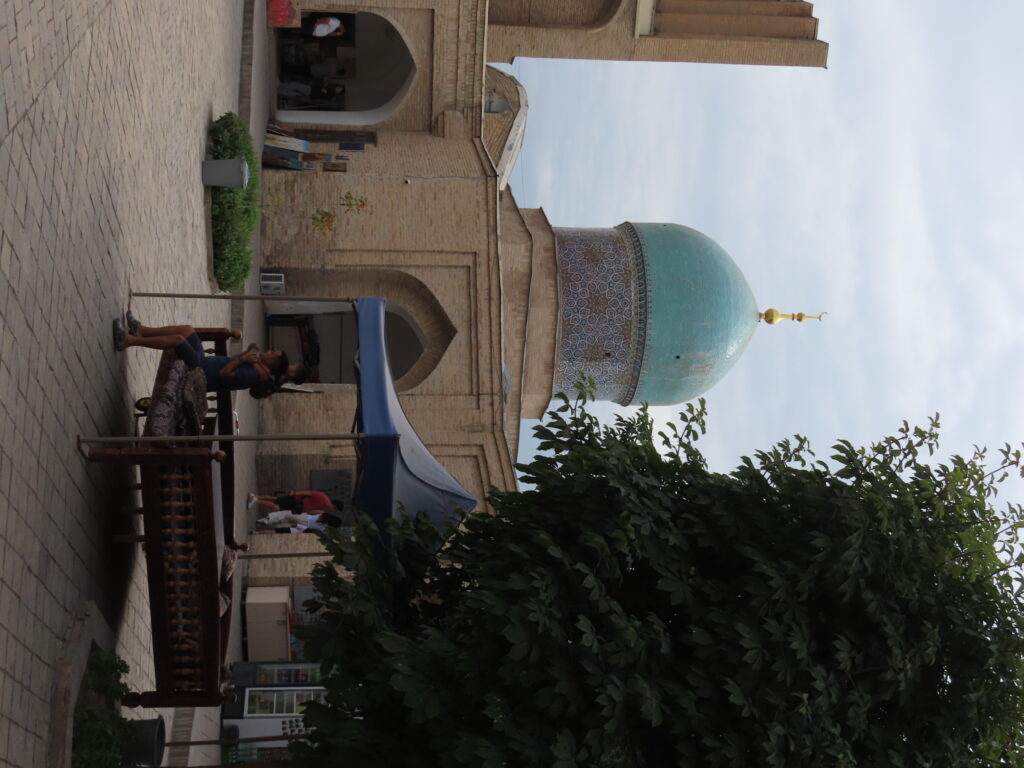
Barak Khan Madrassa at the back has been appropriated with shops selling art and artefacts in the small rooms that must have housed students many centuries back. (The fate of madrassas all over the country). The inner quadrangle makes a pretty picture with a tapchan under a mulberry tree.

The new Khazrati Imam mosque at the other end is a functional one and women enter from a side but once inside we wander all over the gorgeously carpeted bright expansive hall with vaulted ceilings painted in geometric patterns. The courtyard has carved wooden pillars like those found only in Khiva.
Read- A Tale of Two Veiled Valleys: Part I- Shangarh’s Meadows are meant for Musing

The next stop is Chorsu bazaar with it’s iconic dome. At the entrance nans are being sold from cycle carts. Inside, on the ground floor there are sections dedicated to dairy and fresh meats and on the first floor, mounds of dry fruits. (After bargaining you know you have hit the price when the shopkeeper dramatically says you are killing him!)

Around the building are counters of fresh greens and fruits so fabulous and colourful! The apricots are divinely juicy sweet and we drink fresh berry compote, pressed right there. Behind them are stalls of cheap souvenirs and tiny eateries with enticing aromas of live grills. Across the main entrance are lines of shops selling bakery items and small wood work, including bread stamps. After a hearty lunch of piping hot, tandoor fresh somsas and shashliks, we head back since we have an overnight train to Khiva.
Explore- Kashmir with a Cup of Kahwa

Khiva is a Khwabgah
In the morning the train chugs past massive scrubby dunes till we cross the legendry Amu Darya. The landscape changes dramatically from one bank to the next with fields and orchard on the other side. Beyond Khiva railway station’s manicured garden are new hotels neatly laid out. We drive into the small oasis town whose history goes back to biblical times. Legend goes that Noah’s son, Shem found water here (Ironic that the father barely survived a flood). Our hotel is a small old madrassa with a courtyard and a covered platform with the signature carved column. The rooms have tall arched niches and a billowing false ceiling of cloth. It gives a very Arabian Nights vibe.
Read- 7 Cultural Must Do’s of Bali

After freshening up we walk to Itchan Kala. The curving cream ramparts look new. Standing inside in the shade of the incomplete yet massive blue Kalta Minor we realise that although the citadel is small, we will not be able make sense of the labyrinthine lanes and see everything, so after lunch we take a guide. As we walk to the West Gate, retracing our steps, a marriage party makes its way for a photoshoot and over the next few days, at many monuments we see it is a done thing in Uzbekistan. (In Delhi’s Sunder Nursery also!)
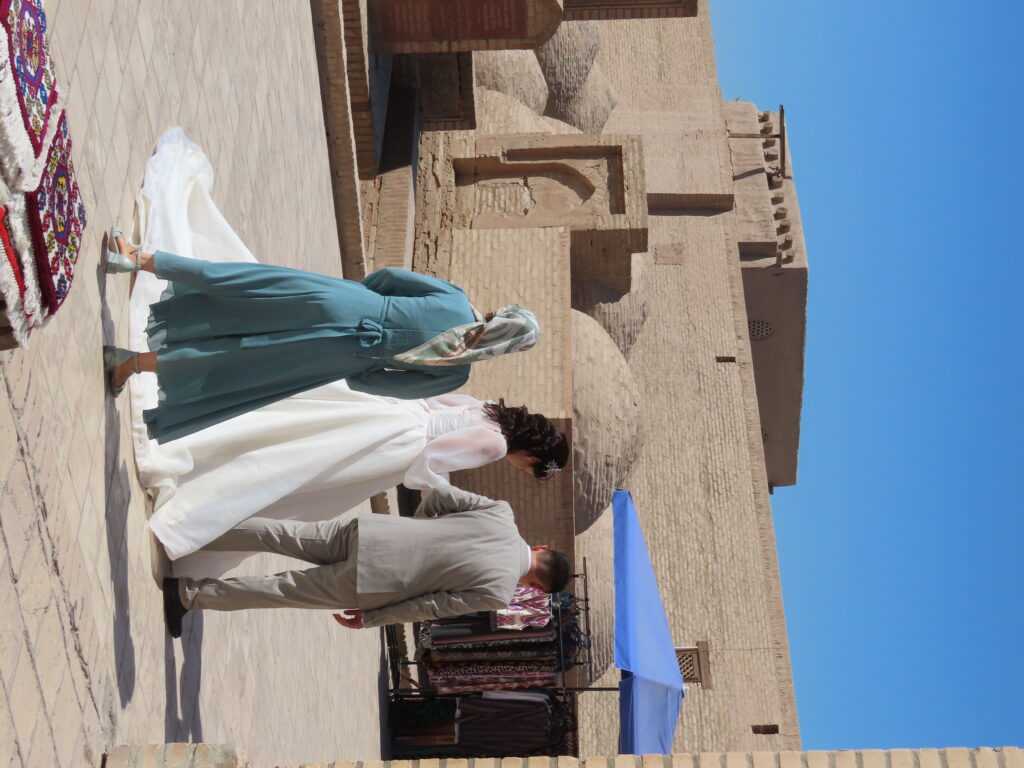
Thanks to Madiyar, our guide, we wander inside the Mohammad Amin Madrassa which is now a hotel. According to him the prison outside Khuna Ark has just one cell since justice was swift… and often brutal. (No point in wasting the exchequers money on feeding the incarcerated.) Small museums in different monuments depict different aspects of life here. The most stunning and distinct architectural feature in Khiva are the ornate wooden pillars made from elm trees in all the inner courtyards.
Read- Part One – A Day Meandering in Mandawa
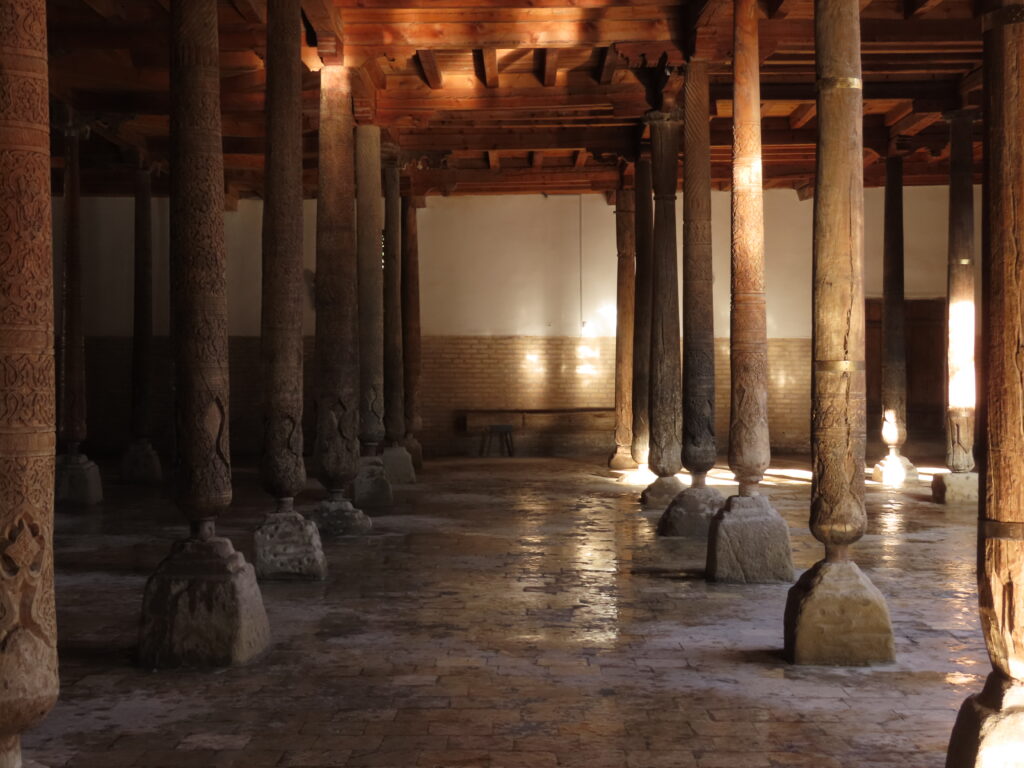
The Jama Masjid is a visual feast with rows of intricately carved ones, some worn out but no two alike! Toshhovli palace, the king’s residence has an apartment each for his four wives with a distinctly designed pillar in front. One, intriguingly has a prominent swastika. Khiva was part of the Khorezm empire and its Zoroastrian roots are still visible in small distinct iconography. Timur and his ancestor Genghis Khan, who annexed Khiva with all his murderous mayhem, are no heroes in these parts as they are in the rest of Uzbekistan. After all the walking around on a warm afternoon we need a breather and in true Uzbeki style we sit in a tapchan outside a café and drink tea. Black or green, tea is an accompaniment to all Uzbekistan meals. There is something surreal about sitting in such an ancient place which is still so alive.

From a rooftop restaurant in the citadel we watch the spotless sky go from a mellow yellow to a dreamy pink and then finally an inky blue. A supermoon makes an appearance from behind the ramparts and it is magical with the monuments all lit up. Music wafts in from somewhere, a tandoor in the square below gets fired up to bake naans for the next day, a boisterous birthday party is on on another roof…
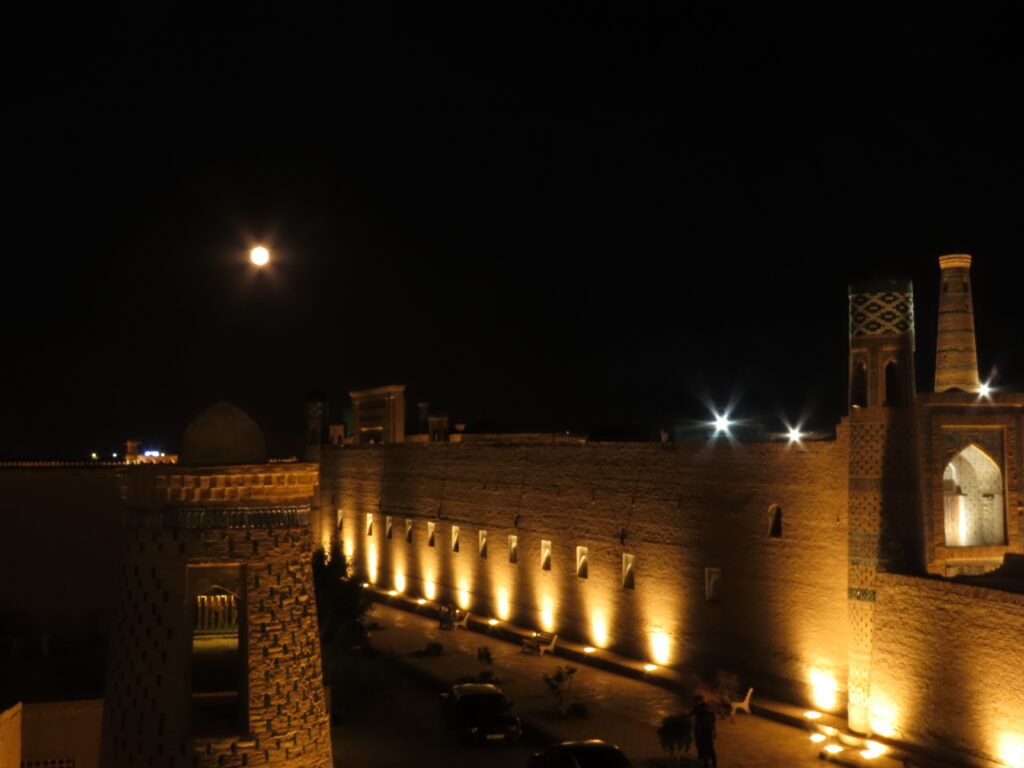
Next morning before a beautifully laid out hearty breakfast we make a dash to Itchan Kala to get a bird’s eye view from the ramparts (whether it is worth the additional payment is debatable) and walk till the slender Islam Khoja minaret with bands of green and blue tilework, through alleys yet to wake up, crossing traditional houses neatly numbered with pretty green tiles.
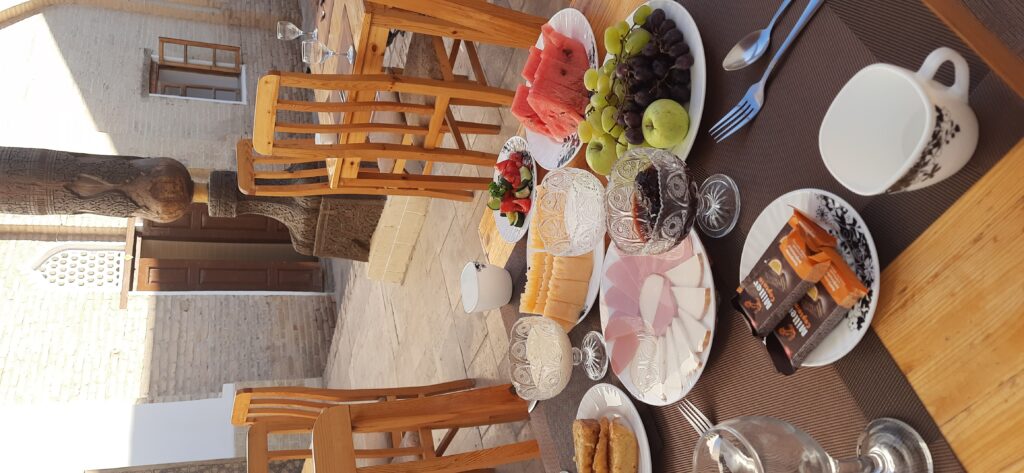
Khiva is an extraordinary example of living heritage where history has not been consigned to museums. Even in Tashkent, on our way out when we take a ride in the metro, getting off at random stations to admire how artfully they have been done up, one line has modern coaches and the other vintage ones. Quintessentially Uzbeki where the past and present run parallel everyday.
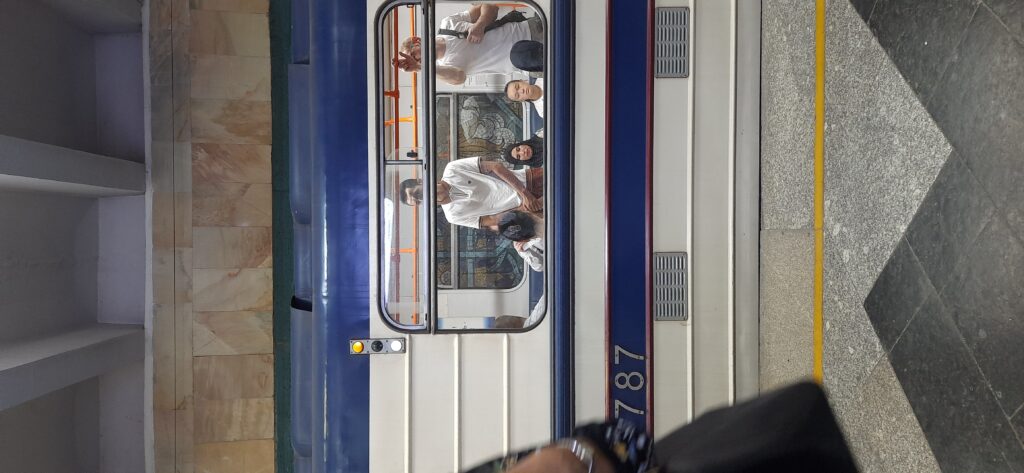
Next stop Bukhara and Samarkand.
Fact File
Getting there–
There is an overnight train from Tashkent to Khiva.
The nearest airport for Khiva is Urgrench.
Note-
There is an entry fee for Itchan Kala. A separate ticket has to be bought for the ramparts.
Teressa is a popular restaurant with a great location. It is best to book a table in advance.
